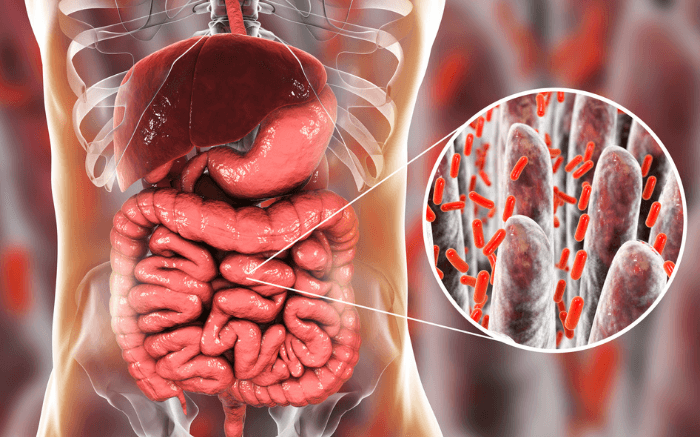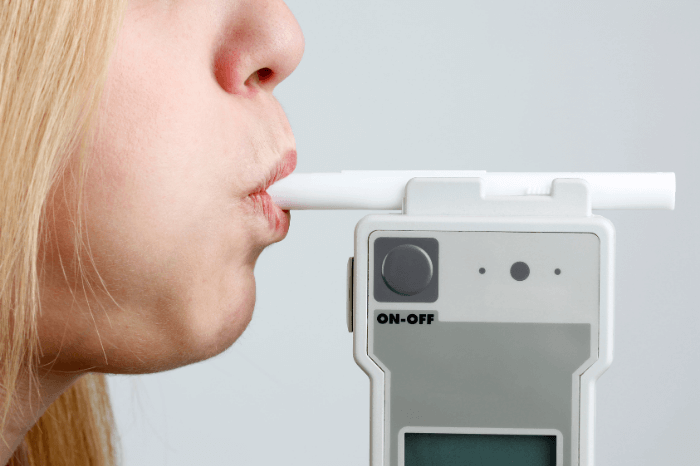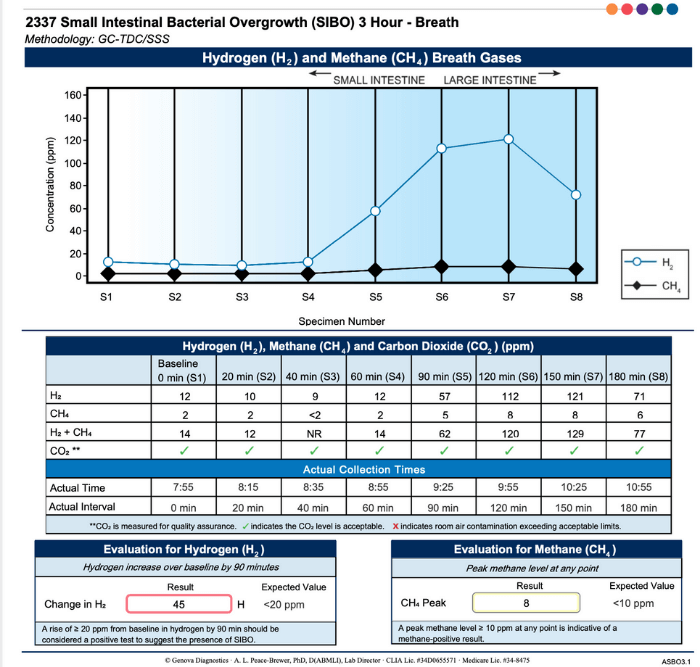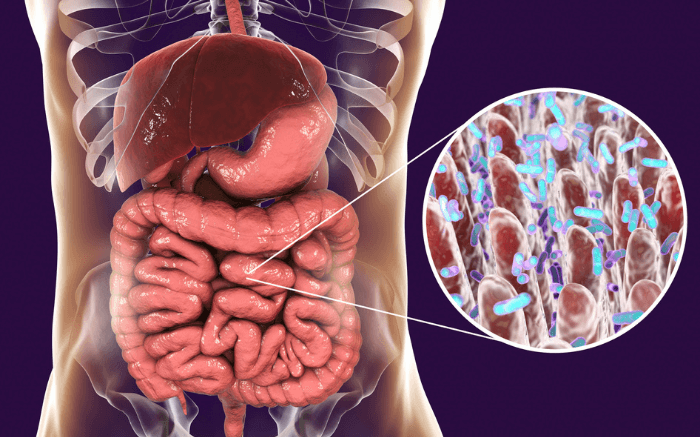Gas, bloating, constipation, abdominal pain, diarrhea… If you are experiencing these symptoms, you may have Small Intestinal Bacterial Overgrowth (SIBO). These symptoms are common for many causes of gastrointestinal distress. So you may be thinking – how do I know it’s SIBO and not something else entirely? Enter the SIBO breath test.

Testing is important to determine whether or not you have SIBO. There are a couple test methods, but the most consistently recommended method is the SIBO Breath Test.
This blog will help you understand the SIBO breath test and kickstart your journey to proper treatment.
Why choose the breath test?
Since many other conditions can cause the same symptoms as SIBO, it is extremely important to be tested before starting any form of treatment. Testing for SIBO will guarantee that you will receive the correct treatment that will alleviate your gastrointestinal distress.
Treatment without confirmation of SIBO through testing can have possible adverse side effects. The use of antibiotics, or herbal antimicrobials and an elemental diet, can negatively impact your health if this is not the treatment you need. It is important that the treatment you are given will address the problem at hand. You don’t want the treatment to end up causing more problems. So, the confirmation of SIBO before treatment is the best course of action.
The two SIBO testing options are the SIBO breath test or jejunal aspiration. But what about stool tests? Stool tests don’t always provide much meaningful information related to SIBO. This is because the results of stool tests actually reflect what is going on in the large intestine – not the small intestine. Stool tests are useful to obtain an idea of what is going on in your digestive tract, but cannot specifically reveal SIBO.
Jejunal aspiration is a very invasive, expensive test that used to be the gold standard of testing for SIBO. However, because of the nature of the test and a history of false positives and false negatives, it is no longer considered the gold standard.
The SIBO breath test is now the method most recommended because it is noninvasive, not as expensive, and completely safe. The SIBO breath test usually costs about $200, and insurance sometimes covers this cost.
SIBO Testing Explained
The breath test measures levels of hydrogen and methane gas in your breath. These levels relate to the fermentation rate of bacteria throughout your digestive tract. Normally, the small intestine does not have much bacteria or gas production. With SIBO, the gas production will be higher in the small intestine because of the overgrowth of bacteria.

During a SIBO breath test, you drink a sugar solution: either glucose or lactulose. Once this sugar reaches the small intestine, where nutrient absorption occurs, the bacteria ferment the sugar and produce gas. Measuring the gases that these bacteria produce (but that the human body does not) is the best way to determine the presence of bacteria in the small intestine.
There are 3 types of SIBO, categorized based on the type of gas the bacteria produce in the small intestine. The 3 types of gases are: Hydrogen, Methane, and Hydrogen Sulfide.
Currently, there are no tests for hydrogen sulfide gas. This means that the SIBO breath test will only include results for hydrogen and methane. However, a skilled practitioner can infer the presence of hydrogen sulfide SIBO based on symptoms and something called a “flatline” result in the hydrogen/methane breath test.
What to Expect When Taking a SIBO Breath Test
As with most tests, there is some preparation required in order to obtain accurate results. For SIBO breath testing, there is an essential prep diet that must be followed. This diet may be followed for up to 2 days based on the direction of your healthcare practitioner.
Preparation: SIBO Test Diet
Before you can take your breath test, you need to spend at least 12 hours on a special diet followed by a 12-hour overnight fast. If you suffer from constipation, this prep diet period will be extended to 36-48 hours total. If you have taken antibiotics within the last month or laxatives within the last week, it is recommended to wait to take the test. This test should not be administered in this situation because the results will be skewed and inaccurate.

The prep diet consists of:
- Baked or broiled animal protein
- Plain white rice
- Eggs
- Small portions of oils or fats
- Plain water
- Weak black coffee or tea
- Salt and pepper
- Clear chicken or beef broth
This list includes the only things that should be eaten during the 12-hour diet – any additions to this diet will invalidate your breath test results. For vegetarians and vegans, speak with your RD to determine your special diet.
The purpose of this diet is to starve the bacteria in your small intestine for 24 hours to ensure that the results are accurate.
Other requirements for taking the test include:
- Avoiding cigarette smoke exposure
- Avoiding exercise
- Waiting one hour after waking up to start the test
- Following instructions closely to ensure the best results
Taking the hydrogen/methane breath test

The test is administered either at a clinic or at home. Taking the test at home means it is your responsibility to follow the instructions closely. You will breathe through breathalyzer device at 15-20 minute intervals over the course of a 2-3 hour period.
The first breath collection is your baseline. The baseline measures the gas production without any food in your system due to your overnight fast. Having no food in your system means that the bacteria have nothing to ferment and use for energy, so there shouldn’t be much gas production.
After collecting the baseline measurement, you will consume a sugar solution. The rest of the test measures the bacterial gas production over time, which relates to the amount of bacteria present in each segment of the digestive tract. The higher the levels of gas present = the larger the overgrowth.
After the test is complete, the testing kit will be sent to a laboratory for analysis. The results will be sent back after a couple weeks and should be interpreted by a professional with SIBO test experience.
Click here to watch a very useful video that explains the process of SIBO breath testing. Watching this video before your test is important for understanding the SIBO testing process, especially if you are doing the test by yourself at home.
SIBO Breath Test Results

The best way to understand your SIBO breath test results is to have a gut health practitioner interpret them. It is possible that your results will show positive results for both hydrogen and methane SIBO, positive for only one of the two gases, or negative for both. Any result gives enough information to guide what the next steps should be.
One possibility is that hydrogen levels appear elevated but still fairly low, while methane increases over time during your breath test. This may mean that you have a mixed-type SIBO, where both hydrogen and methane producing bacteria are present. Methanogens that produce the methane gas are actually fed by hydrogen gas, which results in the lower presence of hydrogen gas in the breath test.
Another possibility is that the results graph presents in a flatline for the production of both gases. This means that you tested negative for both hydrogen and methane SIBO. If this flatline occurs and you are experiencing any of the symptoms below, it is highly likely that you have hydrogen sulfide SIBO.
Symptoms of hydrogen sulfide SIBO:
- Digestive issues
- Pain (abdominal, joint, visceral)
- Sensitivity to light and sound
- Tingling and numbness in extremities
- Feeling sick and toxic
- Intolerance to sulfur-containing foods (garlic, meat, seafood, poultry, nuts, seeds, legumes, cruciferous vegetables, and more)
- Smelly breath and gas
Due to the nuance that is present in this testing method, it is extremely important to work with a professional who has experience with the SIBO breath test. Knowing whether you have SIBO or not, and if so, which type of SIBO is present is essential for formulating the treatment protocol. Each type of SIBO has different requirements for treatment, and each involve a completely different approach.
Retesting hydrogen and methane levels
Usually, after completing the SIBO treatment protocol and your symptoms have subsided, another SIBO breath test is recommended. The reason for retesting is to determine whether or not the SIBO treatment was successful. If the SIBO treatment worked, your SIBO should be eradicated and the SIBO breath test will come back negative for both gases.
If cost is an issue, another option is to monitor your symptoms and retest only if symptoms return. Recurrence is always a possibility, so be sure to communicate with your functional medicine dietitian if you start to experience the uncomfortable symptoms again.

Do you think you have SIBO? Schedule your appointment today to speak with a gut health expert and begin your journey to wellness!



